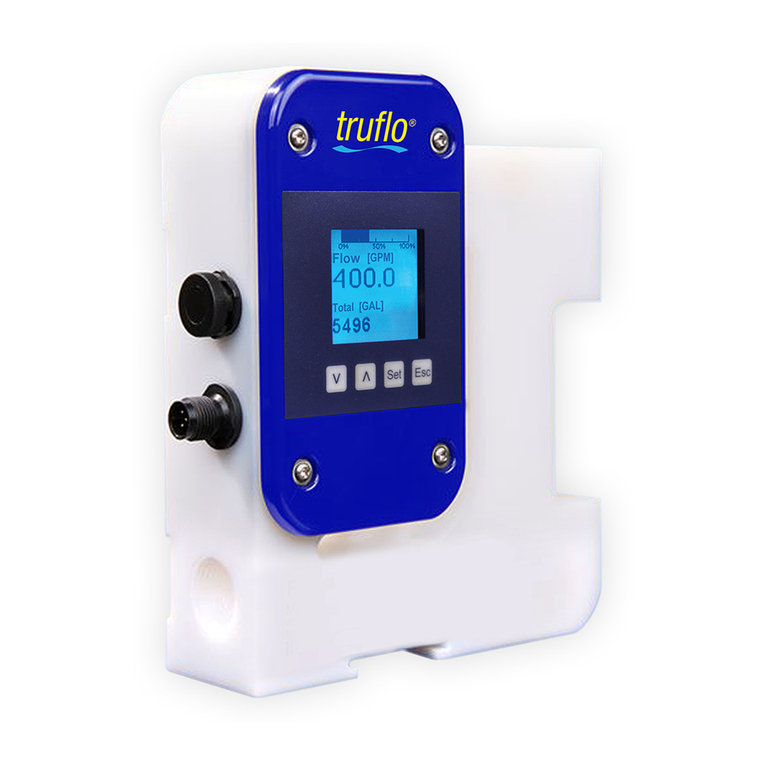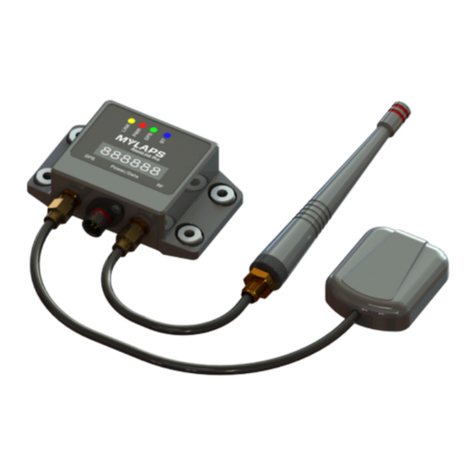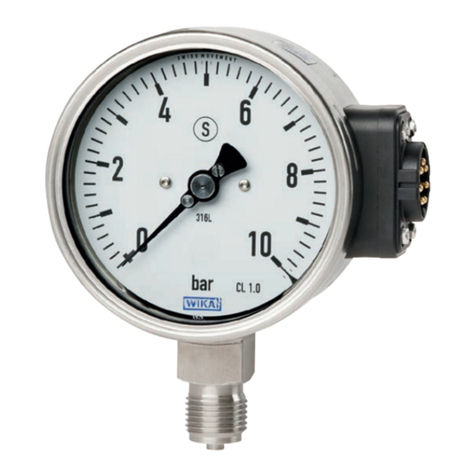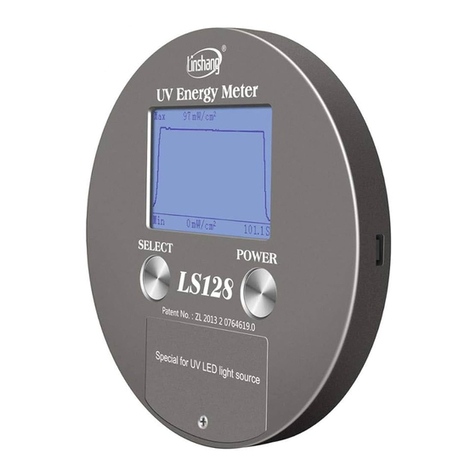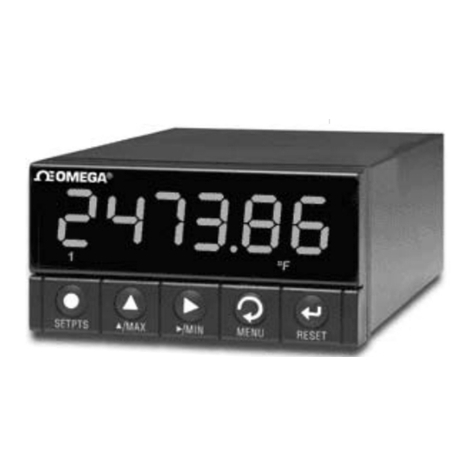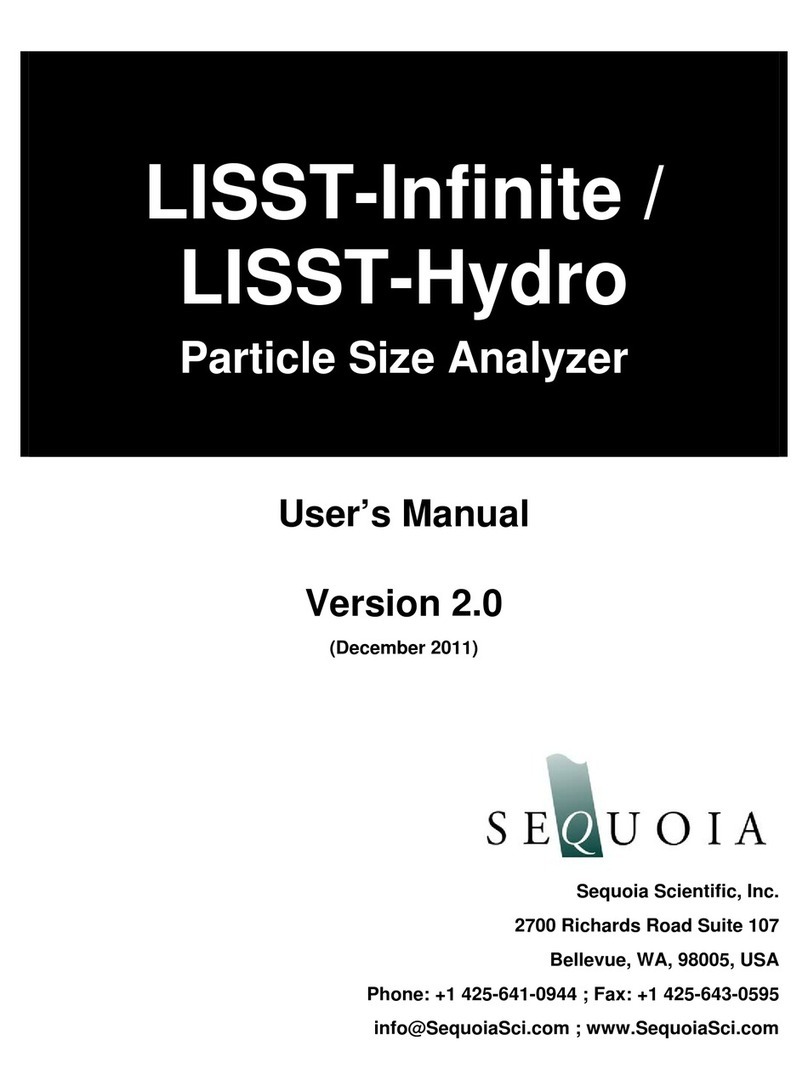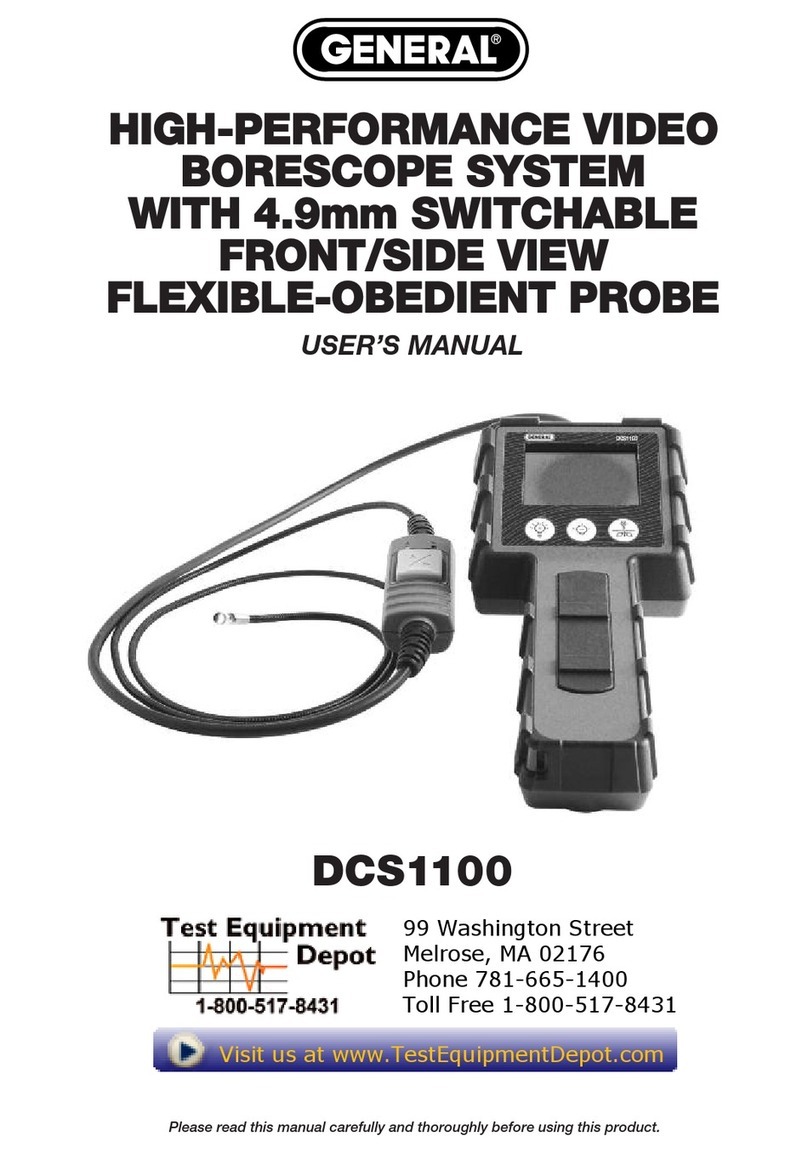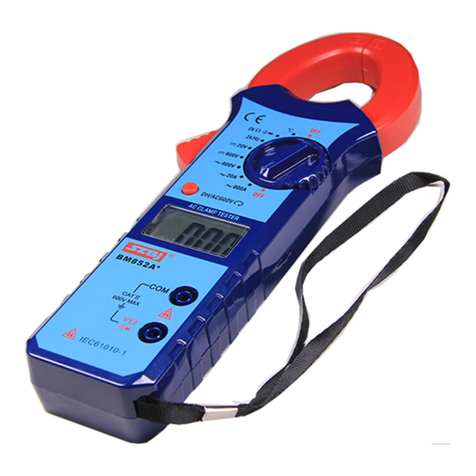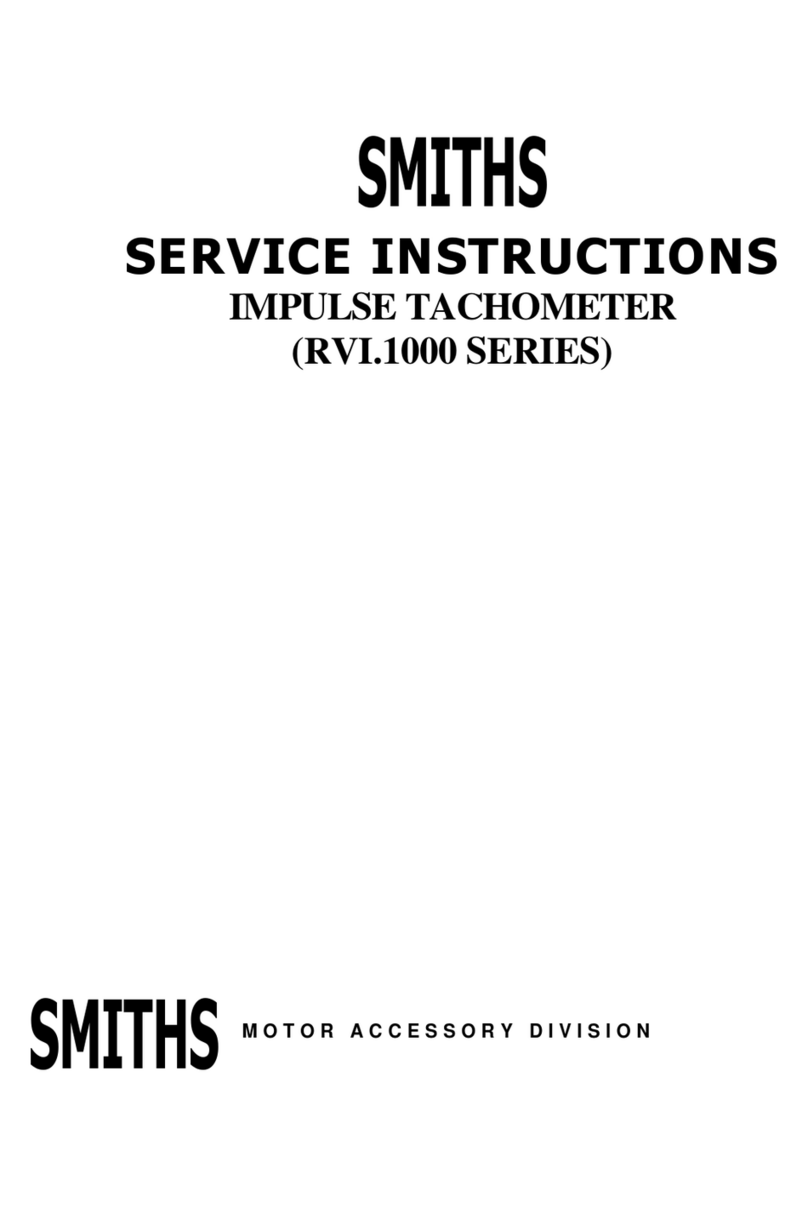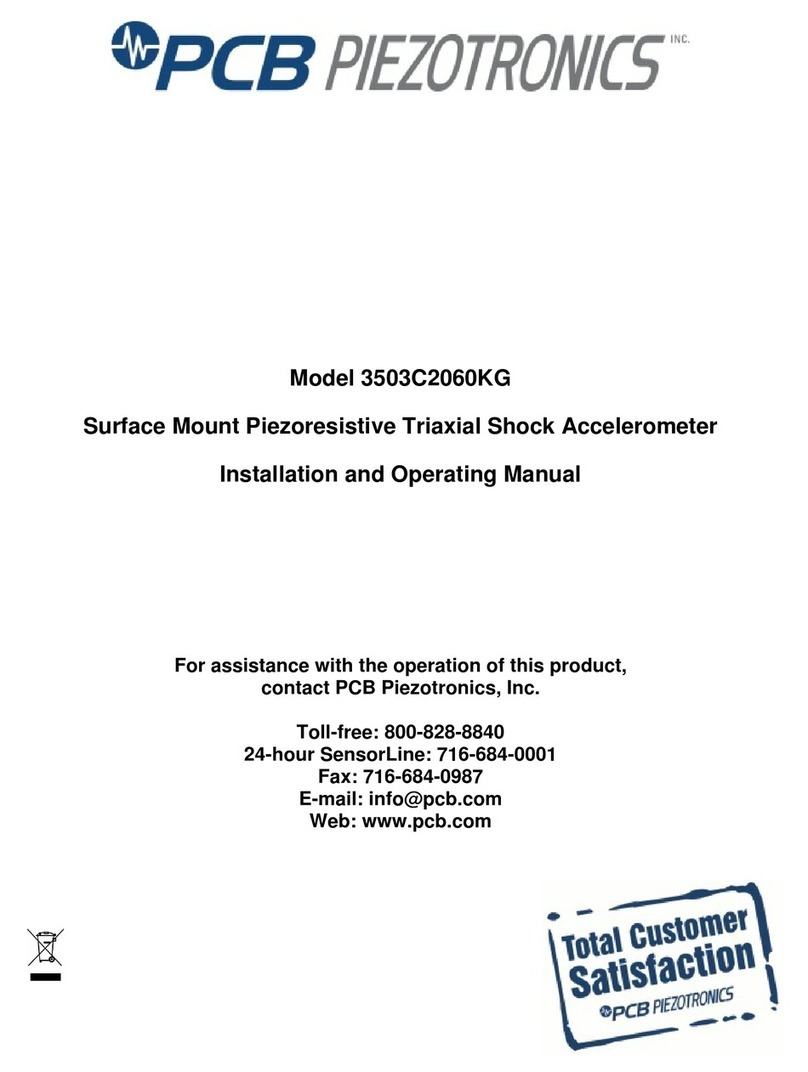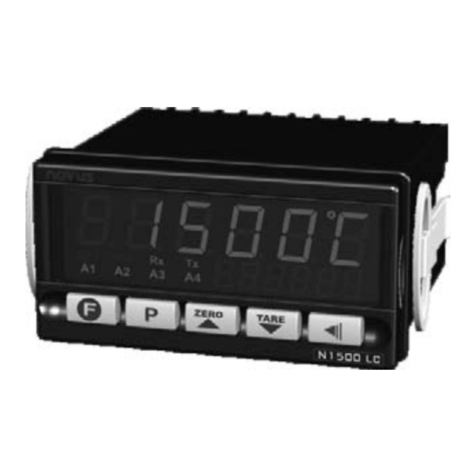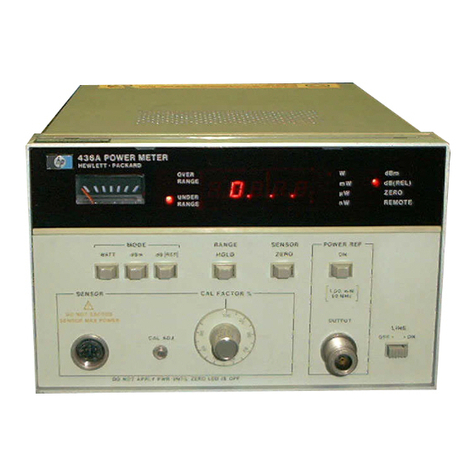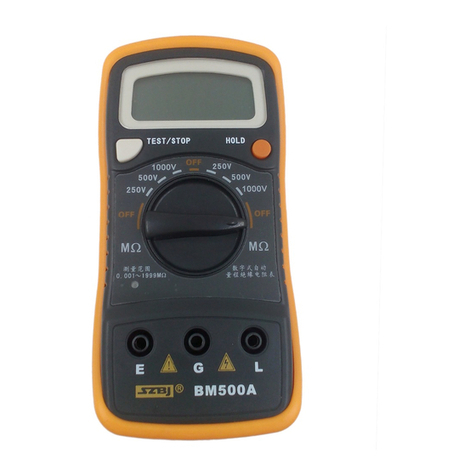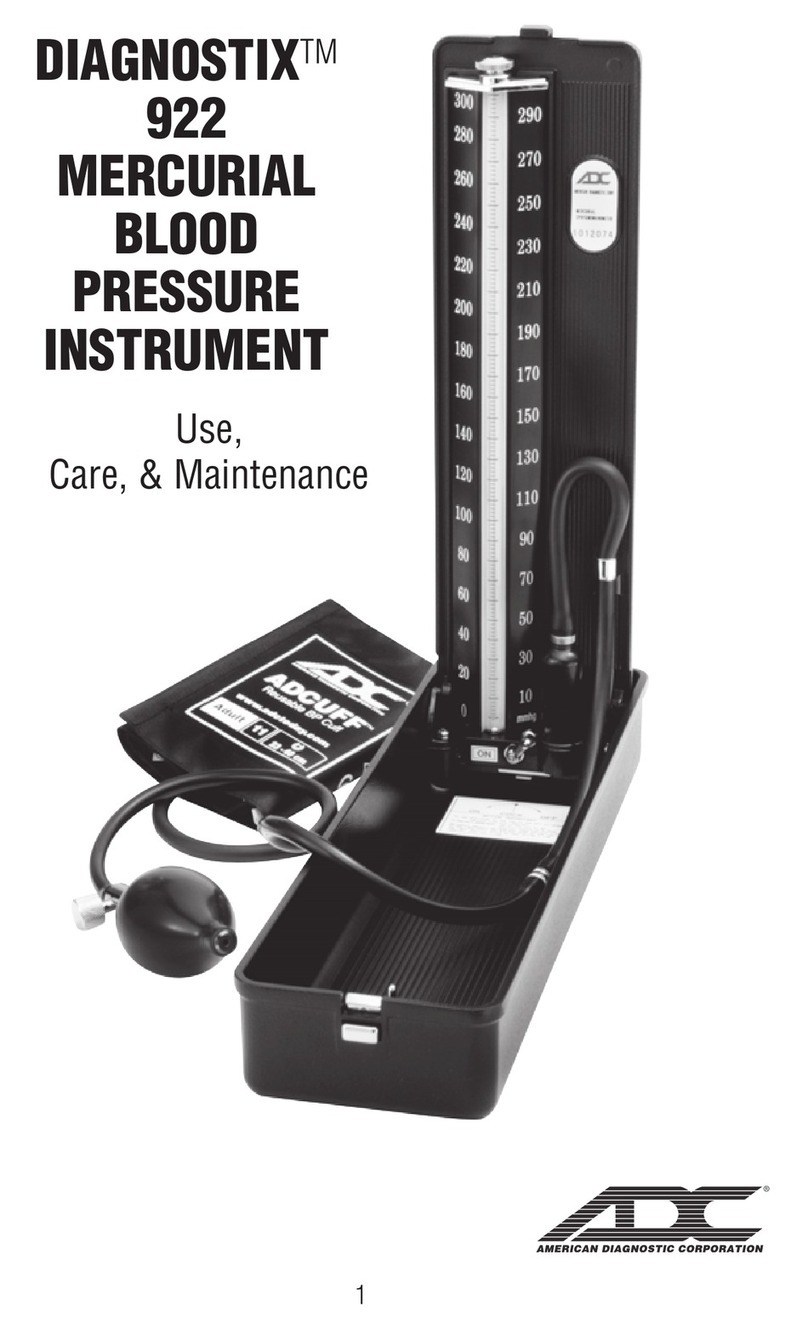Siborg LCR-Reader-MP User manual


LCR-Reader-MP Manual Siborg Systems Inc. 1
1Device Use............................................................................................................................................. 4
1.1 Main Features..............................................................................................................................4
2What is included in the package ...........................................................................................................4
3Symbols and Abbreviations................................................................................................................... 4
4Principle of Operation........................................................................................................................... 5
4.1Formulas to Determine the Parameters:.....................................................................................5
5Safety Measures and General Instructions........................................................................................... 6
6Device Controls ..................................................................................................................................... 7
6.1 Turning on the device..................................................................................................................7
6.2 Turning off the device.................................................................................................................. 7
6.3 Extended Voltage Range Switch.................................................................................................. 7
6.4 Controlling device using its orientation....................................................................................... 7
6.5 Charging the Battery.................................................................................................................... 7
6.6 Main and System Menu............................................................................................................... 8
7Modes of Operation..............................................................................................................................9
7.1 R-L-C-D Mode .............................................................................................................................. 9
7.1.1 Measurements ........................................................................................................................9
7.1.2 Quick Controls.......................................................................................................................10
7.1.3 Open/Short Calibration......................................................................................................... 10
7.1.4 Offset Calibration Board........................................................................................................ 10
7.2 R-L-C-D mode menu ..................................................................................................................11
7.2.1 Primary Parameter................................................................................................................11
7.2.2 Secondary Parameter............................................................................................................12
7.2.3 Test Frequency......................................................................................................................12
7.2.4 Test Signal Level .................................................................................................................... 12
7.2.5 Period ....................................................................................................................................12
7.2.6 SER/PAR Mode ......................................................................................................................12
7.2.7 Sound ....................................................................................................................................12
7.2.8 C-Voltage...............................................................................................................................12

LCR-Reader-MP Manual Siborg Systems Inc. 2
7.2.9 Sample Hold ..........................................................................................................................12
7.2.10 Large Cap ..........................................................................................................................13
7.2.11 Large Cap (1 uF to 40 mF) Settings ...................................................................................13
7.2.12 Super Large Cap > 40 mF Measurement...........................................................................13
7.3 RDC+LED mode..........................................................................................................................14
7.3.1 R test at 1.2 V and R test at 100mV ...................................................................................... 14
7.4 The Voltage mode .....................................................................................................................15
7.4.1 Controls .................................................................................................................................15
7.5 Transient voltage waveforms (oscilloscope mode)...................................................................16
7.6 Oscilloscope mode settings .......................................................................................................16
7.6.1 Controls .................................................................................................................................16
7.7 Frequency Meter mode.............................................................................................................16
7.7.1 Changing the mode ...............................................................................................................16
7.7.2 Frequency, Period control.....................................................................................................16
7.8 Signal Generator Mode .............................................................................................................17
7.8.1 Controls .................................................................................................................................17
8Default Settings...................................................................................................................................18
8.1 Default Settings in R-L-C-D Menu.............................................................................................. 18
8.2 Default Settings in System Menu ..............................................................................................18
9Device Troubleshooting ......................................................................................................................18
9.1 If the device does not turn on ...................................................................................................18
9.2 If there are no initial zero readings on the screen ....................................................................19
9.3 Technical Support......................................................................................................................19
10 Maintenance..................................................................................................................................19
10.1 Care of the surface ....................................................................................................................19
10.2 Repairs.......................................................................................................................................19
11 Storage Conditions......................................................................................................................... 19
12 Transportation ...............................................................................................................................19
13 Warranty........................................................................................................................................ 20

LCR-Reader-MP Manual Siborg Systems Inc. 3
14 Specifications .................................................................................................................................20
14.1 Overview.................................................................................................................................... 20
14.2 FCC Complience.........................................................................................................................21
14.3 General Information..................................................................................................................21
14.4 Details of the Measurement Modes..........................................................................................21
14.4.1 Test Signal Generator .......................................................................................................21
14.4.2 Resistance .........................................................................................................................21
14.4.3 DC Resistance.................................................................................................................... 22
14.4.4 Capacitance.......................................................................................................................22
14.4.5 DC Capacitance Measurement .........................................................................................23
14.4.6 Inductance ........................................................................................................................23
14.4.7 DC Voltage ........................................................................................................................24
14.4.8 AC Voltage......................................................................................................................... 24
14.4.9 LF DDS Signal Generator ...................................................................................................24
14.5 Supplement A ............................................................................................................................25
14.6 Supplement D ............................................................................................................................ 25

LCR-Reader-MP Manual Siborg Systems Inc. 4
1 Device Use
1.1 Main Features
•Automatic component recognition L-C-R-Diode
•Basic Accuracy of 0.1%
•DC measurement of Resistance and Capacitance up to 1 F
•Pass/No Pass Electrolyte Cap indication with Built-in Rejection table
•Automatic/manual frequency setting 100Hz, 10 Hz, 1kHz, 10 kHz, 100 kHz
•Automatic adjustment of test signal to 0.1 V peak-to-peak for in-circuit measurements
•Designated ESR measurements
•Easy Open/Short calibration for better accuracy
•Automatic detection of diode polarity and short circuits
•DC voltage measurements with automatic polarity detection
•Frequency meter
•Oscilloscope graphics for alternating voltage measurements
•Jog-dial control wheel
•Multiple Parameter Display: primary/secondary, etc.
•Screen orientation Automatic/Manually
•Sound indication
•Battery discharge warning, full charge indication
•Automatic power off when not in use
•Backlit LCD
2 What is included in the package
•LCR-Reader MP
•Case
•Offset Calibration Board
•Spare Ergonomic Bent Test Leads*
•Spare Battery*
•Kelvin Probe Connector*
*Optional Accessories
3 Symbols and Abbreviations
DUT –Device Under Test
ESR - Equivalent Series Resistance
Low ESR - Ultralow Equivalent Series Resistance
Rs - Series Resistance
Ls - Inductance in series connection
Cs - Capacitance in Series Connection
Xs - Reactance in Series connection
Rp - Resistance in Parallel connection
Lp - Inductance in Parallel Connection
Cp - Capacitance in Parallel Connection
Xp - Reactance in Parallel Connection

LCR-Reader-MP Manual Siborg Systems Inc. 5
Q- Quality Factor
D- Loss Tangent
RMS - RMS value
TRMS –True RMS Value
LF - Low Frequency
Z- Impedance
| Z | - Impedance Module
DDS - Direct Digital Frequency Synthesis
DC - DC Voltage
AC - Alternating Voltage
4 Principle of Operation
Fig. 1 shows the LCR meter block-diagram. Voltage from the voltage source through a limiting 1 kOhm
resistor is applied to the DUT connected at points A and B. The amplitude and frequency of the Test
Signal V are adjustable. It is also possible to apply either positive or negative DC voltage to the DUT. A
voltage drop on the DUT is measured by DAu. The voltage drop on resistor Rj measured by DAj is
proportional to the current flowing through the measured component. After digitizing the ADC signals
the impedance is calculated according to the formula DUT impedance Z =Rj* Vau/Vaj.
Values of Impedance obtained during calibration with Open and Short probes are stored in the non-
volatile memory of the device and are taken into account in the calculation of the impedance of the
measured component thus eliminating the offsets due to the device internal parasitics.
The measured component can be represented in one of the following equivalent circuits:
[1] and [2]: series circuits
[3] and [4]: parallel circuits
Impedance in series circuits Z = Rs + iXs and in parallel circuits Z = 1/(1/Rp + 1/iXp) where Xs (Xp) <0
if the reactance is capacitive and at Xs (Xp) >0 the reactance is Inductive.
4.1 Formulas to Determine the Parameters:
Electrical capacitance C = 1/(2πf|Xs|) where f is the test frequency.

LCR-Reader-MP Manual Siborg Systems Inc. 6
Inductance L = Xs/(2πf). Q = |Xs|/Rs. D = 1/Q. |Z| =
The device automatically selects the optimum frequency and the equivalent circuit for
measurements. Users can also manually select measurement mode and frequency of the test signal
can be selected from 100 Hz to 100 kHz. Test voltage can be set to 0.65 Vrms and 0.1 Vrms.
By passing direct current through the measured component, the voltage and current can be
measured. Using Ohm’s law, the DC current Resistance (R) can be calculated [6].
By applying the DC voltage in forward and reverse direction, the diodes [5] are detected and the
polarity of p-n junction is determined.
Charging and discharging the capacitor [7] by changing the voltage on the measured component for
a fixed time interval to determine capacitance for capacitors above 40 mF.
The principle of the frequency counter is based on the counting pulses of the reference generator
between the two ramps of the input signal for a certain period of time (by default about 1 second).
At the same time, the quantity of periods of the input signal is counted too. Then the frequency fis
calculated by the formula f = M/N* frwhere f is the number of periods of the input signal, M is the
number of periods of the input signal, N is the number of pulses from the reference generator and fr
is the frequency of the reference generator
The principle of measuring the voltage is based on comparing the input signal with the reference
voltage.
5 Safety Measures and General Instructions
For safe and reliable operation of the device, follow these rules:
1. Excersize additional caution when measure the capacitance, inductance, resistance and diodes
in a circuit with voltage applied
2. Never apply more than 20V DC or 14 Vrms to the probes with the
device switch in position 2.
3. Never apply more than 1.5 V DC or 1.0 Vrms to the probes with the
device switch in position 1.
4. Never measure Charged Capacitors
5. Do not make measurements while the device is charging
6. Charge the battery using a USB port of a computer or a DC charger 5 V +/- 5%. Do not use
damaged cables or chargers. Charging in the presence of moisture may cause fire, electrical
shock, injury or damage to the device or other property.
7. Do not stretch the handles for more than 20mm between the test leads.
8. This device is designed for indoor use.
9. To prevent injury from sharp ends of the test leads, transport the device in the case.
10. Do not touch non-insulated test lead surfaces during measurements. Keep fingers on the
insulated surfaces of the handles.
11. Replacement of the battery must be carried out by a specialist. Batteries must be recycled or
disposed of separately from regular household waste. Do not burn the battery.

LCR-Reader-MP Manual Siborg Systems Inc. 7
6 Device Controls
6.1 Turning On the Device
Press the jog-wheel down and wait until the device beeps.
6.2 Turning Off the Device
1. Press the jog-wheel and hold it until the device shows “Shutdown”.
2. Hold with screen down for 3 beeps (may be enabled via menu).
3. The device turns off if it has been inactive for 120 seconds (default). The automatic time-off setting
can be changed in the menu: System /Power/Time Off
6.3 Extended Voltage Range Switch
The switch is located at the left bottom of the housing. This switch
extends the range of the voltage measurements. In the Voltage and
Frequency modes, the side switch in Position 2 increases the input
impedance of the device from 1 kΩ to 10 MΩ and extends the range
of input voltages.
For RLCD and RD measurements, the switch should be set to
Position 1.
6.4 Controlling Device Using Its Orientation
1. If you rotate and hold the device perpendicular to the floor the screen will flip orientation to the
hand being used. *
2. Turn the probes up to turn on/off the indicator light
3. If you place the device on a flat surface with the
screen facing up, after a few seconds the device will
go into Economy mode. The display shows the
battery voltage and the firmware number. *
4. If you place the device on a flat surface with the
screen down, after 3 beeps the device will
automatically turn off. *
*Function can be enabled/disabled through the device menu: System/Power
6.5 Charging the Battery
The device is powered by a Li-Po battery with 3.7 V rated voltage. The battery icon on the display shows
the remaining charge of the battery. This icon will blink when the device’s power is below 3.6 V and will
automatically turn off at 3.5 V. Information about the battery voltage can be displayed in the menu:
System/Power/Battery Voltage
Charge the battery by connecting it via a
micro-USB cable to a USB DC voltage
source of 5V +/- 5%. The device’s indicator
light will show when the device is charging and will
turn off when the charging is complete.

LCR-Reader-MP Manual Siborg Systems Inc. 8
6.6 Main and System Menu
The device will enter the main menu when the jog-wheel is pressed. The main menu is multi-levelled.
Select the appropriate menu item by moving the jog-wheel in a clockwise or counter clockwise direction
and pressing down to select.
To select the menu item, highlight the corresponding menu item and press the jog-wheel.
To set the default operating mode (R-L-C-D, RDC+LED, Voltage, etc.), press and hold the jog-wheel for
two beeps. This mode is then stored in the device’s memory and will be activated when the device is
powered on.

LCR-Reader-MP Manual Siborg Systems Inc. 9
7 Modes of Operation
7.1 R-L-C-D Mode
This menu item is for measurement of Resistors, Capacitors, Inductances and Diodes. To select the
mode, select R-L-C-D in the main menu. A typical screen looks as follows:
7.1.1 Measurements
When the measured component is connected to the test leads, the screen displays information
depending on the component and the selected settings in the R-L-C-D mode menu.
Capacitance Inductance
Resistance Diode
In automatic mode measurement of capacitance larger than 1 μF is made at 120 Hz, while ESR is
measured at 100 kHz. In this case the frequency of the test signal is not shown on the screen. For ESR
based rejection of electrolytic capacitors two tables are used, one for standard aluminum electrolytic
capacitors and the other for Low ESR capacitors.

LCR-Reader-MP Manual Siborg Systems Inc. 10
In this case two additional figures are displayed. The first number is the quality of the capacitor. For
standard aluminum capacitors a positive number indicate rejection, and for Low ESR values above -10.
The 2nd number is the selected operating voltage of the capacitor. It can be specified in the menu item
Large Cap/C-voltage.
Discharge Capacitors before testing!
7.1.2 Quick Controls
•Turn the jog-wheel clockwise* and hold for 1 beep to change the test parameters (more info
below)
•Turn the jog-wheel counter clockwise and hold for 1 beep to change the test frequency. The
frequency changes cyclically Auto-100Hz-120Hz-1kHz-10kHz-100kHz. If the frequency is selected
from the menu in the range 20-75kHz, the frequency changes cyclically 20kHz-30kHz-40kHz-
50kHz-60kHz-75kHz-100kHz
•Turn the jog-wheel clockwise and hold for 2 beeps to eliminate the offset. If the probes are
shorted, parasitic resistance is obtained. If the probes are open, parasitic capacitance is
obtained. Please use LCR-Reader Calibration Board to set a proper distance between the test
leads (according to the component size) because the parasitic capacitance depends on the
distance.
•Turn the jog-wheel counter-clockwise and hold for 1 beep to toggle the signal level between
Auto and fixed 0.65Vrms
•If the probes are not connected to anything, press and hold up to 2 beeps to toggle the test
frequency between Auto and 100 kHz. If a part is connected to the probes, then relative
measurements are made showing the difference from the first measured component. Additional
symbol in the top-middle of the screen is displayed.
*When connected to the Capacitance is greater
than 1 μF range for the operating voltage
7.1.3 Open/Short Calibration
Before the first use, the device must be calibrated with Open and Short probes for each test frequency.
When the device is set to Auto-frequency the device automatically calibrates at 100Hz, 1 kHz, 10kHz,
and 100kHz.
To eliminate the offset, turn the jog-wheel clockwise, hold for 2 beeps and release. When measuring
small capacitances less than 100 pF, use LCR-Reader Offset Calibration Board included in the package.

LCR-Reader-MP Manual Siborg Systems Inc. 11
Insert the test leads at the distance of the size of the component and calibrate with open probes. Only
then measure the capacitor.
Before measuring small inductances (less than 1 μH) and resistances (less than 10 Ohm) wipe off the tips
of any dirt and oxides and calibrate with short probes.
7.1.4 Offset Calibration Board
The Offset Calibration Board provides a reliable method of determining the parasitic offset
between the tips. The dummy PCB uses holes to represent various sizes of components.
To use the board, place the tips into the corresponding holes to the size of component under
test; set open/short calibration by turning the jog-wheel clockwise and hold for 2 beeps and
release. The result is the actual value of the component.
7.2 R-L-C-D mode menu
7.2.1 Primary Parameter
In Auto mode the type of measured component is determined automatically: R: Resistor, L: Inductance,
C: Capacitor, D: Diode. Measurement mode can also be set manually to R, L, C, Z as the impedance.

LCR-Reader-MP Manual Siborg Systems Inc. 12
7.2.2 Secondary Parameter
In Auto mode for inductors quality Q factor is displayed for Q>1 and series Resistance Rs for Q <1, and
for capacitors, loss tangent for C < 1μF and ESR for C> 1 μF. Automatic secondary parameter selection
does not work if the Test Signal is set to Automatic, R is used as the secondary parameter in this case.
7.2.3 Test Frequency
This menu item allows to select the frequency of the test signal. In Auto mode, the device automatically
selects a frequency of 100Hz, 120 Hz, 1 kHz or 10 kHz, depending on the rating and type of the
component. Users can also manually select the test frequency. A higher frequency is used for measuring
small values of capacitances and inductances. Resistor measuring are always made at 1 kHz unless
RDC+LED Mode is selected. If 100 kHz frequency is required, press the jog-wheel and hold for 2 beeps.
7.2.4 Test Signal Level
For more stable readings, select 0.65Vrms or Auto signal level. Auto is best for measuring loose
components and in-circuit measurements of R, C, L. When measuring on boards, if at high test signal
level opens p-n junctions of semiconductors components causing an error in the measurements, then
the signal level is automatically reduced to 0.1 V peak-to-peak and the value is re-measured. In this case,
the screen shows the diode symbol and the direction of the p-n junction.
7.2.5 Period
Increased measurement time results in more stable readings, reduced time results in faster updates on
the screen.
7.2.6 SER/PAR Mode
This is used to select the equivalent circuit depending on the characteristics of the element.
7.2.7 Sound
The device will beep when the resistance is less than 10 Ohm or a short circuit is found.
7.2.8 C-Voltage
This setting has to be selected in the menu when evaluating electrolytic capacitors for rejection by ESR.
The voltage is written on the capacitor’s housing.
7.2.9 Sample Hold
When selected, the device will hold measurement data on the screen. A beep will sound when the
measurement is made and the values are held on the screen after the component has been
disconnected from the device. The device will only reset when a new component is measured or the test
probes are shorted.

LCR-Reader-MP Manual Siborg Systems Inc. 13
In order to set the default measurement mode when the device is turned on, select the mode, press the
jog-wheel and hold for 2 beeps. This measurement setting will be stored in the device’s non-volatile
memory for all other measurements until selecting other parameters or Default in the menu.
7.2.10 Large Cap
In this mode, capacitance and ESR of capacitors from 1 μF to 40 mF are measured. The capacitance is
measured at a frequency of 50Hz, and the capacitor's ESR is measured at the frequency of 100 kHz.
Discharge Capacitors before testing!
If open p-n junctions of semiconductor components cause an error in the measurements, then the
screen shows the diode symbol and the direction of the p-n junction is shown instead of the primary
parameter type.
If the resistance of the component is less than 10 ohms, there will be short beeps. Before the first
application in this sub-mode it is necessary to calibrate the device with both open and shorted probes.
For the rejection of electrolytes based on ESR, two tables are stored in the memory of the device, one
for standard aluminum capacitors and the other for Low ESR capacitors. Two additional numbers are
displayed on the screen in this case: the first number is the quality of the capacitor. For standard
aluminum capacitors, positive values indicate rejection, and for Low ESR rejected values are above -10.
The second number is selected operating voltage of the capacitor in menu under C voltage: 6.3, 10, 16,
2, 3, 50-63, 100, and 160+ Volts. This menu opens by clockwise turn of the jog-wheel.
7.2.11 Large Cap (1 uF to 40 mF) Settings
•Clockwise for 1 beep to open the mode menu.
•Clockwise for 2 beeps to make calibration eliminating the offset. Only short calibration is
required.
•Counter clockwise for 2 beeps to toggle the test signal level between 0.65 Vrms and 0.1
V peak-to-peak.
7.2.12 Super Large Cap > 40 mF Measurement
• When in the Large Cap mode, counter clockwise for 1 beep to switch to DC capacitance
measurement mode for Capacitors larger than 40 mF up to 680 mF. To speed up the settling
of the readings, short the capacitor leads for 2-3 seconds before the measurements. Counter
clockwise for 1 beep again to return to the normal Large Cap mode.

LCR-Reader-MP Manual Siborg Systems Inc. 14
Discharge Capacitors before testing!
7.3 RDC+LED mode
This mode is designed to measure DC resistance, parameters of Diodes/LEDs, and leakage currents.
Besides, it allows to measure a shunt resistor on a board that can be used for evaluating the current via
that shunt in a live circuit.
• Clockwise for 1 beep to open the mode menu. Select sub-modes: Auto, Diode, R test at 1.2 V, R test at
100 mV.
• Clockwise for 2 beeps to calibrate with open and short probes to eliminate the offset.
In the Auto mode resistances and diodes are automatically detected. The bottom line displays the
resistance of the connected element, at the top the current Ir flowing through it. For diodes, the polarity
of the diode, the voltage drop in the open state and the reverse current Ir are displayed.
Diode mode is used for diode parameter extraction using DC bias. It is recommended for in-circuit
characterization of p-n junctions. The screen displays the voltage drop in the open state when the
forward bias is applied. If the reverse bias is applied, OL is displayed instead. Turn the jog-wheel
counter-clockwise and hold for 1 beep to change the polarity of the probes.
7.3.1 R test at 1.2 V and R test at 100mV
These modes are used to measure DC resistance, recommended for in-circuit detection of resistors. It
also allows to measure a shunt resistor on the board that could be used for current measurements.
• Press and hold for 1 beep to save the resistance value (shunt) in the device memory for the current
measurements. Read below about the current measurement in the Voltage mode section.

LCR-Reader-MP Manual Siborg Systems Inc. 15
7.4 The Voltage mode
This mode is to measure DC and AC voltage. The device automatically detects the polarity of the DC
voltage. The upper line of the display shows the values of the RMS voltage. The second line shows the
peak-to-peak voltage range.
7.4.1 Controls
• Clockwise for 1 beep turns on (off) the current measurement mode.
In this mode, the voltage value measured on the external resistors (shunts) is converted into a current
and displayed on the screen. In the upper line of the screen the resistance is displayed, taking into
account the input resistance of the device, and the lower value of the current. To enter the resistance of
the shunt into the instrument memory, go to the RDC+LED mode. With the circuit de-energized, connect
the shunt and press the switch, hold for 2 beeps.
• Anti-clockwise for 1 beep to turn on and off the capture mode of the maximum and minimum voltage
values.
• Clockwise for 2 beeps to calibrate with short probes to eliminate the offset. The switch must be in
position 1 in order to do the calibration (see Section 6.3 Extended Voltage Range Switch).

LCR-Reader-MP Manual Siborg Systems Inc. 16
7.5 Transient voltage waveforms (oscilloscope mode)
In this mode, you can view the voltage waveform. On the right side of the screen, the horizontal scale
(T / pixel), vertical scale (V / div), signal frequency and signal sweep are displayed.
7.6 Oscilloscope mode settings
Usually automatic parameter settings are acceptable. The two parameters can be adjusted manually
are, the time scale (T/pix) and the voltage scale (V/div).
7.6.1 Controls
• Clockwise for 1 beep to increase parameter.
• Counter-clockwise for 1 beep to decrease parameter.
• Counter -clockwise for 2 beeps to select the parameter to change: T/pix or V/div.
• Clockwise for 2 beeps to automatic selection of T/pix (V/div).
• Press and hold up to 2 beeps to enter the waiting oscilloscope mode. In the window, set the
parameters T/pix and V/div as indicated above. Press and hold up to 2 beeps again to activate the mode.
The word "Wait" is displayed on the screen. When the signal is applied to the probes, 675 sample points
are recorded. Turn the jog-wheel clockwise or counter clockwise to view the signal on the screen.
7.7 Frequency Meter mode
In this mode, it is possible to measure frequency, pulse duration, duty cycle, period and count the
number of pulses.
7.7.1 Changing the mode
Clockwise for 1 beep to open menu to select the desired mode. When the mode is selected, hold for 2
beeps to make the mode default.
7.7.2 Frequency, Period control
•Counter-clockwise for 1 beep to change the measurement time cyclically 0.25s-0.5s-1s-2s.

LCR-Reader-MP Manual Siborg Systems Inc. 17
•Counter-clockwise for 1 beep to reset the counter
•Counter-clockwise for 1 beep to measure of a positive or negative pulse.
7.8 Signal Generator Mode
Sine, triangle, and rectangle signals are generated. The signal is applied to the device probes. It is
possible to adjust the span (peak-to-peak) of a signal from 0.1 to 2.8 V, a constant bias of ± 0.6 V *, and a
duty cycle of 5 - 95% in 5% increments. Parameters are stored when exiting the mode. On the right of
the screen from top to bottom: sweep, offset, duty cycle and the waveform icon. The frequency in Hz is
displayed in the center of the screen.
The self-shutdown time is 4 times longer than the default in other modes. An external decoupling
capacitor is required to supply a signal to a circuit under voltage. It should be connected to a probe
located closer to the side switch. The other probe is a common one. In this mode, the device does not
turn-off by "flipping" and the function of automatic change of display orientation (left/right hand) is
disabled. It is recommended to use LCR-Reader Kelvin Probe Connector to simplify the device operation
in this mode.
7.8.1 Controls
•Clockwise for 1 beep to select the item to change.
•Counter-clockwise for 1 beep to increase the selected parameter.

LCR-Reader-MP Manual Siborg Systems Inc. 18
•Clockwise for 2 beeps to go to the initial position.
•Hold the jog-wheel down for 2 beeps to change the waveform type.
•The sum of the displacement and 1/2 of the span must be less than or equal to 1.4 V.
8 Default Settings
8.1 Default Settings in R-L-C-D Menu
Error! No index entries found. The following settings are stored in the device EEPROM when Default in
the R-L-C-D Menu is selected:
•Primary Parameter Auto
•Secondary Parameter Auto
•Frequency Auto
•Signal Level 0.65 Vrms
•Measurement Period 0.5 s
•Equivalent Circuit Auto
•Sound On
•Data Hold Off
8.2 Default Settings in System Menu
The following settings are stored in the device EEPROM when Default in the System Menu is selected:
•Primary Parameter Auto
•Secondary Parameter Auto
•Frequency Auto
•Signal Level 0.65 Vrms
•Measurement Period 0.5 s
•Equivalent Circuit Auto
•Sound On
•Data Hold Off
•Shutdown Time 120 s
•Wakeup Mode R-L-C-D
•RDC+LED Mode Auto
•Frequency Mode Frequency
•Frequency Measurement Time 1 s
•System Sound Medium
•All offsets are reset to zero
9 Device Troubleshooting
9.1 If the device does not turn on
a. Push the joystick and hold it for 1 beep, then release it.
b. Charge the battery.
c. Contact the manufacturer for repair.

LCR-Reader-MP Manual Siborg Systems Inc. 19
9.2 If there are no initial zero readings on the screen
a. From the system menu, select Default.
b. Clean the contacts and calibrate with both closed and open probes.
c. Review this manual to find possible errors in operating the device.
9.3 Technical Support
When contacting technical support, please provide the following information:
•Model number
•Serial number of the device
•Software version number
10 Maintenance
10.1 Care of the surface
a. Do not expose housing to water, it is not waterproof.
b. Do not expose the display for a long period of time to direct sunlight.
c. Use a soft cloth dampened with water to clean the outside surface and cleaning the LCD display
device.
d. Do not use liquid solvents or detergents.
10.2 Repairs
If there is an unexpected measurement result, check the quality of the contact between the tips of the
device probes and the element being examined. Make sure you make the measurements correctly.
Carry out the instrument diagnostics. Not allowed independent dismantling of the case, replacement of
individual elements and circuits. For repair, please contact the manufacturer.
11 Storage Conditions
•Temperature and humidity during storage: -10 ° C to 50 ° C with relative humidity <80%.
•There should be no dust, acid and alkali vapours in the storage room.
•Recharge the built-in battery once every 6 months.
12 Transportation
All modes of transportation at ambient temperatures from -40 ° C to + 50 ° С
The device must be protected against precipitation and dust.
Table of contents
Other Siborg Measuring Instrument manuals



